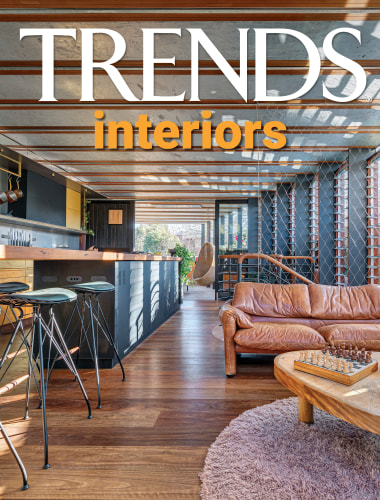Curated furniture collection takes centre stage
Innovative spatial planning had knock-on effects for the finishes and furniture selection in the renovation of this Brazilian apartment
Interior by FGMF (Forte Gimenes & Marcondes Ferraz) Architects
From FGMF:
Located in a prominent 1969 building in Sao Paulo, this apartment space of about 600m² was chosen by the owner with the help of FGMF.
The property, although well cared for, had not undergone changes since the work done by the former residents in 1978 – almost 45 years before the current intervention.
The renovation of the apartment would be profound in terms of space and facilities.
The family programme, consisting of a couple with a pre-teen daughter, was reasonably simple considering the dimensions of the property – guest bedroom, couple’s and daughter’s bedrooms, integrated living rooms, office and a comfortable space for the family piano.
We initially developed several variations of layout to understand and discuss among all the various possible of arrangements of the plan, especially the intimate area – to then deal with a cohesive architectural plan that tied the overall organisation, finishes and interiors of the apartment.
The elimination of the large entrance hall and removal of several original walls provide a vast and integrated living room with kitchen and dining room with full view of Buenos Aires Square.
There is, in the building, a kind of 'core' composed of social elevators, toilet, service circulation and central ventilation and lighting well.
The main circulation of the apartment occurs naturally around this central core, and because of the importance of this element in everyday life, we began to think about the composition of materials of the place in terms of this element, clad with greenish patinated copper plates.
Thin metal plates anchored to the walls and inserted between the copper plates become a bookcase that runs through the social and service area, organising the doors of elevators and toilet, and encompassing the wine cellar and becoming support furniture of the kitchen area.
A large wooden element, with unevenness, seen as a 'volume within the apartment space' was designed to organise office, TV room and intimate room for the daily life of the family.
This volume, fully clad in oak, has trellis-like sliding doors in Freijó muxarabi that can be fully opened or closed depending on the occasion and create an everyday dynamic that changes the appearance of the social area.
The rest of the social area, kitchen and multipurpose space is finished in basalt plates that surround the pillars and protrude from the floor, creating volumes with landscaping that embrace the dining room.
These volumes also arrange the large open central island of the kitchen which is finished with stainless steel furniture.
The apartment furniture was established primarily as a kind of beginning of a collection for the owners, almost all of them of Brazilian design, from Modernists to contemporaries.
We established an organisation for different spaces; for one social living area, in basalt, and being more austere, we sought to use wooden furniture and avoid furniture with a more industrial aspect; while for the other more intimate space, wrapped in wood flooring, we introduced more upholstered and comfortable furniture.
All environments relate furniture designs despite their decades of designing – such as Mole armchairs by Sergio Rodrigues with furniture by Bittencourt or FGMF itself, or Zalszupin’s ondine and Adriana armchairs juxtaposed with sofas designed by Marcus Ferreira and Guilherme Wentz.
Some pieces were also created by the architects especially for this project, such as the marble coffee table of the intimate room or the Crest sideboard, all in cast glass, for specific project locations.
Secondary layers such as luminaires, objects and compositions followed the same reasoning, as it is possible to observe on the coffee table composed of traditional Brazilian stools in a kind of artistic-functional installation.
The end result of the project is a very integrated space – fluid, with materials and furniture that we consider timeless for a perennial project – but that houses layout changes with ease without losing the general characteristics of the intervention.
The new interior is not tied to fads and will age well, in the same way as the wonderful building into which it is inserted.
Credit list
Photographer
Awards
Story by: Trendsideas
Home kitchen bathroom commercial design

















